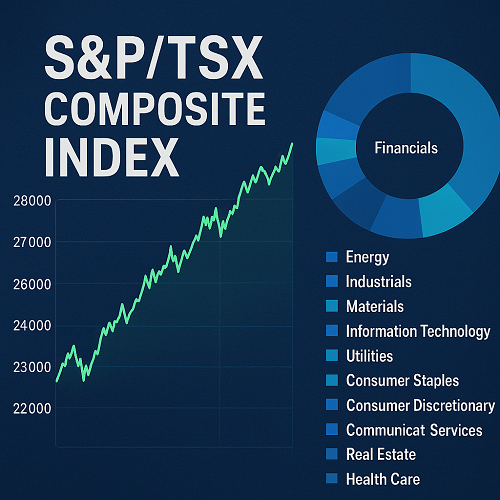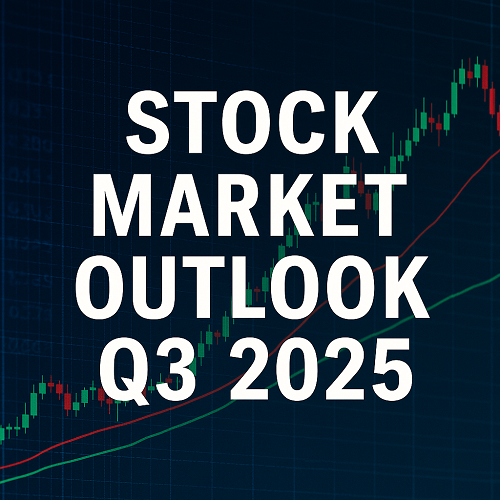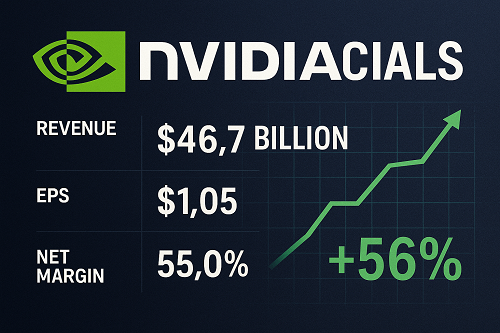What is the S&P/TSX Composite Index?
- The S&P/TSX Composite Index (ticker: ^GSPTSE) is the broadest benchmark for the Canadian equity market. It tracks major companies listed on the Toronto Stock Exchange (TSX), covering approximately 70-95% of the total market capitalization of the TSX.
- It is a capitalization-weighted index, meaning larger firms exert more influence on the index’s movement.
- The goal is to provide a broad snapshot of the health of Canadian public companies and sectors, acting similarly to how the S&P 500 functions in the U.S.
2Historical Evolution & Key Milestones
- The TSX Composite originates from the TSE 300 Composite Index, which began in 1977. In 2002, Standard & Poor’s took over and renamed it to the S&P/TSX Composite.
- Over time, the index has undergone changes in methodology, sector weightings, inclusion criteria, and has adapted to reflect shifts in the Canadian economy (e.g., increased role of energy, materials, financials, emergence of technology).
- Record high levels: Recent data indicates the TSX Composite has been reaching new all-time highs. For example, it closed at historic highs around late 2025.
Methodology & Eligibility Criteria
To be included in or remain part of the S&P/TSX Composite Index, companies must meet several strict criteria. These include:
| Criterion | Description |
|---|---|
| Canadian domicile / listing | Must be listed on the Toronto Stock Exchange and be a Canadian company or satisfy Canadian legal incorporation criteria. |
| Minimum market capitalization & weight | Must represent a minimum weight of about 0.05% of the index (or similar threshold) and maintain a baseline size. Smaller companies are excluded. |
| Liquidity & trading volume | Must meet minimum thresholds in terms of trading volume and number of transactions. Ensures constituents are reasonably liquid. |
| Price thresholds | Minimum share price (e.g., often at least CAD $1), and average price over recent months must meet a floor. |
| Regular rebalancing | The index is reviewed and rebalanced typically on a quarterly basis to adjust for corporate actions, changes in eligibility, and to manage cap limits. |
- Additionally, to avoid undue concentration risk, individual stocks might have caps on how much weight they can carry in terms of value, liquidity, or transaction volume.
Composition & Sector Breakdown
Understanding what’s in the index (which companies, sectors, weights) is central to grasping what drives its returns and risk.
Number of Constituents
- The index generally includes ~230–250 companies (recent counts: around 237) from across sectors.
Top Constituents by Market Cap
- Major banks (Royal Bank of Canada, Toronto-Dominion Bank, Bank of Nova Scotia), energy giants, materials / mining companies often dominate the top weights.
- Other notable names include Shopify, Canadian National Railway, Enbridge, Sun Life Financial, Canadian Natural Resources.
Sector Exposure
The index spans all main sectors. As of 2024-2025, the heavier sectors include:
| Sector | Approximate Weight / Importance | Recent Trends |
|---|---|---|
| Financials | Largest sector by weight. Banking, insurance, asset management dominate. | Benefitting from rising lending, steady policy, but sensitive to interest rates and regulation. |
| Energy | High exposure, especially oil & gas exploration, pipelines, producers. | Volatile with global fossil fuel demand, commodity prices, ESG pressures. |
| Materials / Mining | Significant, especially for metals (gold, base metals), fertilizers etc. | Cyclical; sensitive to global demand from China, geopolitical risks. |
| Industrials, Communication Services, Utilities, Consumer Sectors, Technology | Smaller but growing. Tech especially has been increasing in relevance. |
- Emerging themes: Renewable energy, ESG considerations, and technology firms are gradually playing larger roles.
Recent Performance & Key Market Drivers (2024-2025)
Performance Highlights
- Over the past 52 weeks, the TSX Composite has ranged approximately between CAD 22,200 and CAD 29,660.
- The index has been setting new record highs, indicating upward momentum in Canadian equities.
Key Drivers
| Driver | Impact |
|---|---|
| Interest Rates & Monetary Policy | Moves by the Bank of Canada, and the U.S. Fed, especially rate cuts or hikes, have large influence — affecting sectors like financials, real estate, and consumer debtors. |
| Commodity Prices | Canada is a resource-rich nation. Commodity cycles (oil, metals, agricultural/energy-related inputs) deeply affect earnings and investor sentiment. |
| Global Trade & Export Demand | Exports of natural resources to the U.S., China, and emerging economies drive revenue for many TSX companies. Protectionism, tariffs or trade agreement changes have outsized impacts. |
| Currency Movements (CAD vs USD etc.) | A weaker Canadian dollar can help export-oriented TSX companies; for domestic sectors or importers, impact can vary. |
| ESG / Regulatory / Energy Transition Pressures | Especially in energy and mining sectors, environmental regulation, carbon policies, global climate goals, and investor ESG mandates are shifting valuations and strategies. |
| Technology & Innovation | While Canada is not (yet) dominated by “mega-cap tech” like the U.S., firms (e.g. Shopify etc.) are boosting the tech exposure, and investor interest in growth/innovation is rising. |
Recent Challenges
- Volatility in commodity prices due to geopolitical risk or supply chain disruptions.
- Inflation and cost pressures (labor, energy) that squeeze profit margins.
- Regulatory uncertainties (e.g. carbon tax, environmental royalties, Indigenous rights) especially for energy/mining.
- Global macro risks: global central bank tightening/loosening cycles, U.S. policy shifts, trade disruptions.
How the TSX Composite Compares Globally
- Relative to U.S. indexes (e.g. S&P 500, NASDAQ), TSX is more commodity- and financial-heavy, less dominated by big tech. This can mean higher sensitivity to commodity cycles and global resource demand.
- Performance can lag in tech-led equity bull runs, but outperform in commodity-led cycles or when global demand for resources surges.
- For international investors, the TSX offers diversification benefits: exposure to Canada’s natural resource base, as well as stable financial institutions, in a developed economy with a transparent regulatory environment.
Investment Vehicles & Strategies
If you want exposure to the TSX Composite, here are your main options:
Index Funds & ETFs
- Capped Composite ETFs: iShares S&P/TSX Capped Composite and BMO S&P/TSX Capped Composite (these attempt to replicate the index while limiting weight of any single company).
- S&P/TSX 60 ETFs: Focus on the 60 largest TSX companies (subset). For a broader range, Composite ETFs are better.
Active Management
- Mutual funds choosing high exposure to financials, materials, or energy vs growth/technology depending on market cycle.
- Sector rotation strategies (e.g. overweight materials/energy when commodity outlook is strong, rotate to defensives when volatility expected).
Derivatives, Structured Products
- Futures, options on the index (for hedging or leveraged exposure).
- ETFs with leverage or inverse exposure for trading short-term views.
Risks, Challenges & Tailwinds
Key Risks
- Commodity Dependence: Downturns in oil, metals, and resource prices hit the TSX hard.
- Regulatory & Environmental risks for energy/mining firms. Carbon policy, Indigenous rights, supply chain sustainability are increasingly material.
- Currency risk for international investors: fluctuations in CAD can erode or enhance returns when converted.
- Interest rate risk: Rising rates can dampen borrowing, slow consumer spending, reduce valuations in rate-sensitive sectors.
- Global economic slowdowns: Demand for Canadian exports may drop if global growth slows.
Tailwinds & Opportunities
- Rising commodity demand (e.g. green metals, lithium, battery minerals) could spur growth in materials sector.
- Infrastructure investments and energy transition (renewable energy, carbon capture) could create new winners.
- ESG investing is drawing more capital; companies aligned well may benefit.
- Trade agreements / improved export access can provide long-term upside.
Outlook & Forecasts
- Analysts’ forecasts (as of mid-2025) suggest moderate gains for the TSX by year-end, driven by potential interest rate cuts, commodity strength, and better clarity on trade policy.
- Some models point to resistance at recent all-time high levels, suggesting potential for pullbacks (profit taking), especially if global macro risks intensify.
- Over medium-term (1-3 years), growth likely tied to energy/materials cycles, shifts toward renewables, and whether Canada can ramp up innovation in technology / services sectors.
FAQs
Q1. How many companies does the TSX Composite include?
A1. Roughly 230-250 companies; recent counts are about 237 constituents.
Q2. How often is the index rebalanced?
A2. Quarterly, to adjust for changes in eligibility, corporate actions, and to manage sector or constituent weight caps.
Q3. Can foreign investors invest in the TSX Composite?
A3. Yes. ETFs tracking the index are available; many international brokers provide access. Currency risk applies.
Q4. What drives long-term returns of the TSX Composite?
A4. Combination of corporate earnings (especially in financials, energy, materials), commodity prices, macroeconomic stability, and global demand for Canadian exports.
Q5. What are some strong indicators to watch that might signal TSX Composite future movements?
A5. Commodity price trends (oil, metals), CAD/USD exchange rates, Bank of Canada policy and interest rates, inflation, global trade policy, and ESG regulation particularly in resource-intensive sectors.
Conclusion
The S&P/TSX Composite Index is a vital gauge of Canada’s economy and a core component for any investor seeking exposure to Canadian equities. Its heavy weighting in financials, energy, and materials means that macro, commodity, and regulatory forces play outsized roles in its performance. For those looking to invest, a balanced approach — using index/fund/ETF exposure, watching sector cycles, and managing macro and currency risks — can enhance returns while controlling downside.





 XAUT-USD
XAUT-USD  AMD
AMD  MARA
MARA  SHOP
SHOP  BULL
BULL  CL=F
CL=F